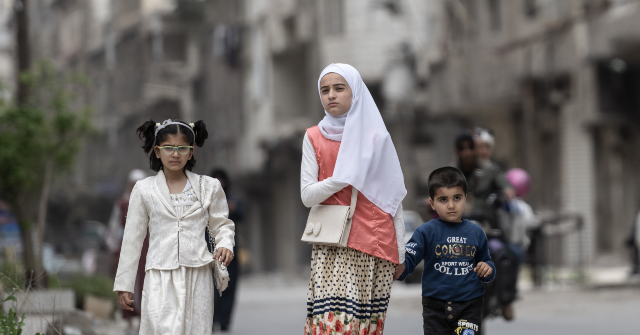A senior United Nations official informed the Security Council on Monday that, according to the organization’s estimates, over 2 million Syrians have been able to return to their homes in the aftermath of the collapse of the Bashar Assad regime in December.
The vast majority of these, 1.5 million, are believed to have been people internally displaced by the war, which began in 2011 and culminated nearly 14 years later. Another 700,000 are refugees from abroad.
According to the U.N.’s International Office of Migration (IOM), over 6 million Syrians left the country in the years of the civil war. Another 7.4 million left their homes but were displaced within Syria, meaning the war displaced over 13 million. The IOM estimated at the end of the war that over 16 million Syrians relied on humanitarian aid to survive.
The statistics were used to encourage member states of the Security Council to invest in humanitarian aid for Syrians and the rebuilding of the country post-war. U.N. Office for the Coordination of Humanitarian Affairs (OCHA) Director of Operations and Advocacy Edem Wosornu lamented that the prodigious returnee rate “only adds pressure on services — like health, water, education — which already face major gaps.”
Wosornu offered a briefing on the humanitarian situation in Syria in general, with particular emphasis on the lack of basic food and medical goods in much of the country as well as the recent sectarian clashes between the Druze community and Sunni Muslim Bedouins in Sweida.
The Assad regime collapsed in December after a swift military campaign executed by the al-Qaeda offshoot jihadist organization Hayat Tahrir al-Sham (HTS). HTS leaders entered Damascus after storming Aleppo and forcing the dissolution of Assad’s armed forces. Assad himself and his family fled to Moscow, Russia, in early December 2024.
As a result, HTS became the ruling government of the country. Its leader, Ahmed al-Sharaa, rapidly abandoned his jihadist nom de guerre “Abu Mohammed al-Jolani” and began wearing suits, asking the world for foreign investment to rebuild the country. Sharaa has repeatedly stated that, while he supports the imposition of an Islamist government, his administration would respect the rights of Syria’s ethnic and religious minorities — a claim that many human rights groups and international observers have taken with skepticism.
The end of the war and the rule of the Iran-backed Assad regime has prompted hundreds of thousands of Syrians exiled abroad to return home. Some have been pressured by their host governments, most prominently in Turkey, where some local politicians offered free bus tickets to Syrian refugees to leave. Wosornu, the U.N. official, told the Security Council this group totaled about 700,000 since December.
The U.N. official urged countries to offer financial support for these communities — “$3.2 billion through the end of the year” — and expressed appreciation for “steps to ease unilateral sanctions” abroad. Leading the way on sanctions relief has been the administration of President Donald Trump, which lifted sanctions imposed to punish the Assad regime, stripped HTS of its terrorist designation, and endorsed Sharaa personally. Trump met with Sharaa at the behest of the Saudi government in May, described him as “young” and “attractive” and stating that he would move Washington out of the way of Syria’s success.
The government of Saudi Arabia, which facilitated the meeting, has taken arguably the most advantage of Trump lifting sanctions on Syria. Sharaa hosted a massive economic event attracting over 130 investors from Saudi Arabia last week, which Syrian officials claimed resulted in over $6 billion in commitments to help rebuild infrastructure, establish manufacturing hubs, and create jobs. Much of that investment would go toward the capital city Damascus, however, as rural Syria remains difficult to access for international corporations.
Wosornu also specifically addressed the situation in Sweida in her report on Monday. Violence erupted there following the abduction of a Druze community member by Bedouin tribesmen. The Druze attacked the Bedouins, which led to Bedouins attacking civilians throughout Sweida, threatening an escalation into genocide. The government of Israel intervened and conducted airstrikes on Damascus in defense of the Druze, who called for support from the country. Sharaa responded by blaming Israel for the violence and celebrating the Bedouins in a national address, then deploying buses to evacuate the Bedouins from the area.
“The recent violence in Sweida, as the Special Envoy Pederson has just outlined, has displaced an estimated 175,000 people,” Wosornu narrated, “both within the area and to surrounding governorates. That represents a third of the population in a Governorate, where two-thirds of people were already in need of assistance.”
“Again, as the Special Envoy has said, there have been reports of horrendous physical assaults, abductions, forced evictions, psychological abuse, and the looting and destruction of homes,” the official added.
Wosornu suggested that the Security Council help with humanitarian aid for all those affected.
Follow Frances Martel on Facebook and Twitter.
Read the full article here


